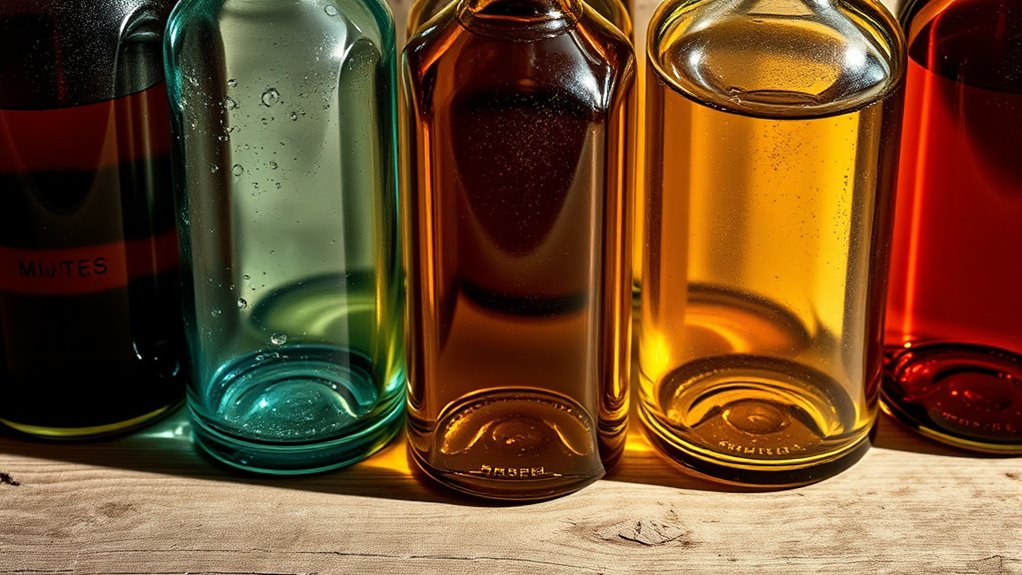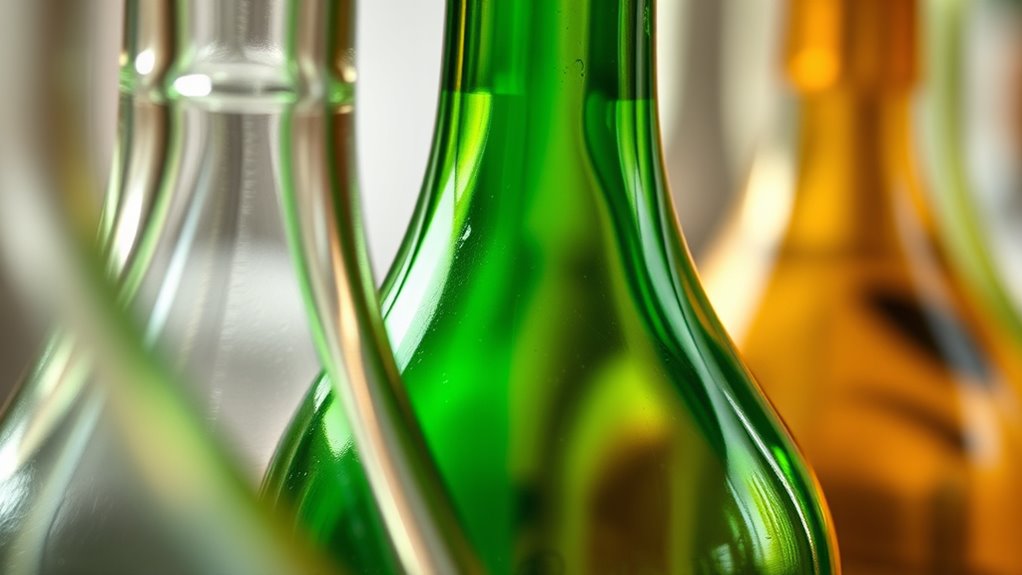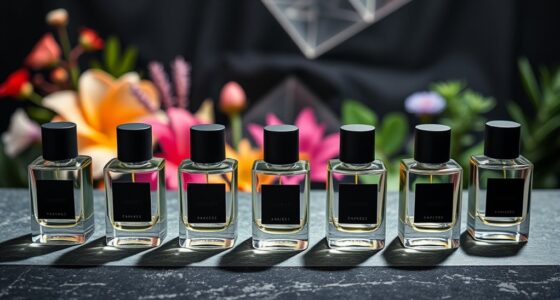Batch-to-batch differences in bottle smells happen because manufacturing processes, raw materials, and storage conditions vary. Variations in resin, additives, or cleaning residues can influence odors, while storage in different environments affects how scents develop over time. High temperatures or humidity can intensify smells or cause mold. These factors lead to noticeable scent differences between batches. If you want to understand what causes these variations and how to manage them, keep exploring further.
Key Takeaways
- Variations in manufacturing materials and processes cause differences in residual chemicals, leading to batch-specific odors.
- Changes in resin, additives, or raw material sources influence the scent profile of bottles across batches.
- Storage conditions like temperature, humidity, and exposure to odors can intensify or alter bottle smells over time.
- Residues from manufacturing or cleaning processes can remain in bottles, contributing to batch-specific odors.
- Advances in quality control help reduce scent differences, but small environmental and material variations still cause odor variability.

Batch variations occur when products produced in different manufacturing runs exhibit noticeable differences in quality, appearance, or performance. When it comes to bottles, especially those used for beverages, cosmetics, or pharmaceuticals, these variations can sometimes lead to unexpected smells or odors. Understanding why this happens requires looking into how bottles are made and how storage conditions influence their scent.
During bottle manufacturing, materials like plastics or glass are processed in large quantities. Even with strict quality control, slight differences can occur between batches. For plastic bottles, the type of resin, additives, and manufacturing temperature all influence the final product’s smell. If a batch uses a different resin supplier or slightly varies in processing conditions, it might emit a distinct odor. Similarly, glass bottles, while more inert, can still develop odors due to residues from the manufacturing process or storage. These residuals can be more pronounced in certain batches, especially if cleaning protocols are inconsistent.
Material differences and manufacturing residues can cause batch-specific bottle odors.
Storage conditions play a significant role in how bottles smell over time. Exposure to high temperatures, humidity, or sunlight can cause chemical reactions within the bottle material. For plastic bottles, heat can accelerate the release of volatile compounds, resulting in a noticeable smell. When bottles are stored in damp environments, mold or mustiness can develop, further altering their odor profile. Even glass bottles stored improperly can pick up odors from surrounding materials or residues from previous contents. If bottles are stored in warehouses with strong odors or chemicals, those smells can transfer to the bottles themselves.
The way you handle and store bottles after manufacturing also impacts their scent. If you leave bottles in a sealed package for a long time, any residual manufacturing odors might intensify or change. Conversely, exposing bottles to fresh air or cleaning them before use can help reduce or eliminate unwanted smells. Proper storage conditions—cool, dry, and well-ventilated environments—are essential to maintaining the integrity of the bottle’s scent profile. Additionally, advancements in AI-driven quality control are helping manufacturers detect and minimize batch-to-batch differences more effectively.
It’s important to recognize that batch variations are a normal part of manufacturing. Small differences in materials or environmental factors can lead to noticeable smell variations among bottles. While these odors might be unsettling at first, they often don’t affect the safety or functionality of the bottles. By understanding how bottle manufacturing and storage conditions influence odors, you can better manage your expectations and take steps to minimize any unwanted smells. This awareness helps ensure that the bottles you use meet your standards for quality and scent consistency.
Frequently Asked Questions
Do Batch Variations Affect the Taste of the Beverage?
Yes, batch variations can affect the taste of your beverage. Manufacturing discrepancies, like differences in ingredients or processing, can lead to subtle flavor inconsistencies between batches. While companies aim for flavor consistency, minor variations may occur, especially with complex or handcrafted drinks. These differences might be noticeable in aroma, texture, or overall taste, but they usually don’t substantially alter your drinking experience.
How Long Do Batch Differences Typically Last?
You’ll notice batch differences usually last from a few weeks to several months, depending on the fermentation process and bottle aging. Imagine watching the beverage evolve like a sunset, gradually mellowing and blending flavors. During this time, subtle changes in aroma and taste can occur as the ingredients settle and mature. These variations often stabilize once the fermentation process concludes and the beverage completes bottle aging, giving you a more consistent experience.
Can Storage Conditions Influence Bottle Smell?
Yes, storage conditions can influence bottle smell. Your storage environment, especially exposure to heat, light, or humidity, can cause odors to develop or intensify. Also, the bottle material matters; plastic bottles may absorb odors from their surroundings, while glass is more inert. To keep your bottles smelling fresh, store them in a cool, dark, and dry place, and consider the material when choosing your storage setup.
Are Batch Variations Consistent Across Different Brands?
You’ll find batch variations aren’t always consistent across brands. For example, a recent study showed that even within the same brand, different manufacturing processes can lead to subtle smell differences in bottles. These inconsistencies arise from variations in raw materials, production controls, and storage. While some brands maintain strict batch consistency, others may have more noticeable differences, making it essential for consumers to recognize these manufacturing process impacts.
Is It Safe to Drink Bottles With Different Odors?
If bottles have different odors, it’s generally safe to drink from them, but you should be cautious. These smells often come from chemical residues in packaging materials, which don’t usually pose health risks. However, if the odor is strong, unusual, or persists after rinsing, it’s best to avoid drinking. Trust your senses and check for any signs of contamination or spoilage before consuming.
Conclusion
Just like a painter’s palette, each batch holds its own unique hues and textures, shaping your experience with every bottle. Remember, even the most legendary wines have their variations—it’s part of their charm. So, next time you notice a smell difference, embrace it as a reminder that every bottle tells its own story. Like a classic novel, each batch offers a new chapter—waiting for you to discover its secrets.









